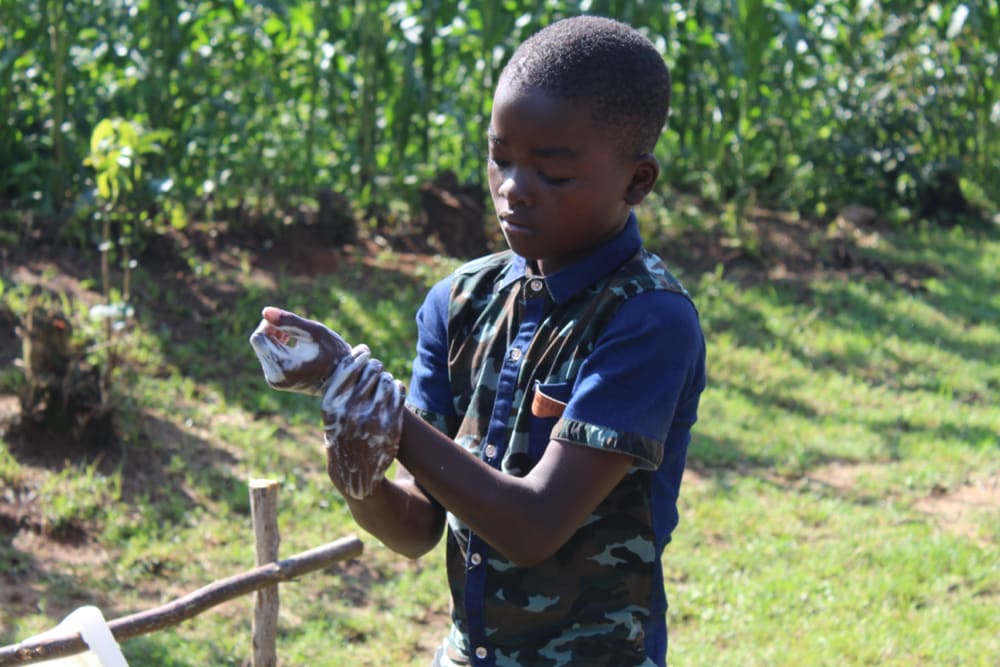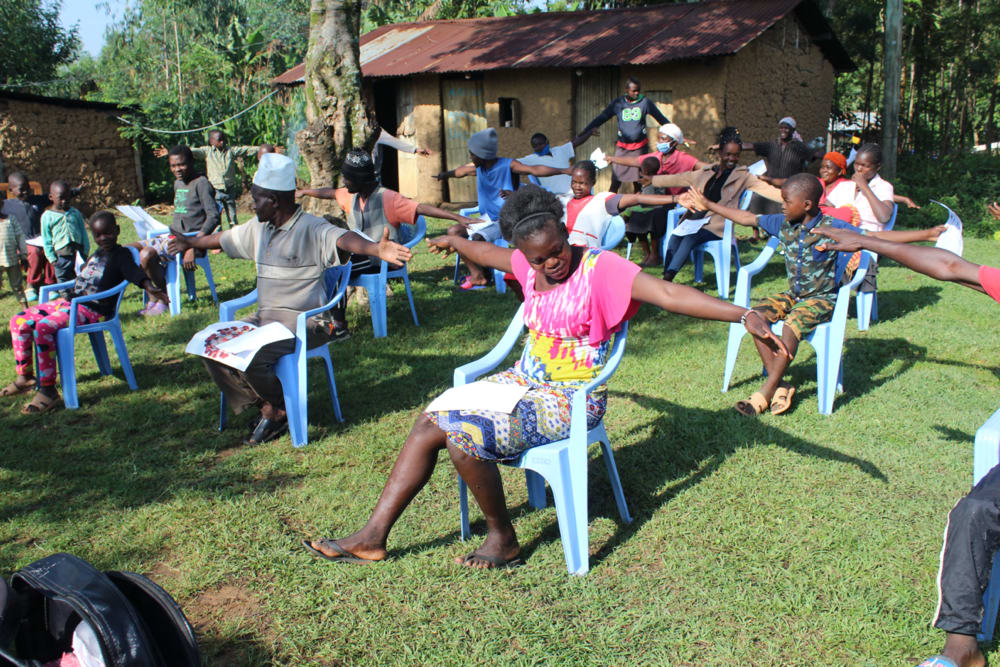This project is a part of our shared program with Western Water and Sanitation Forum (WEWASAFO). Our team is pleased to directly share the below report (edited for clarity, as needed).
Welcome to the Community
A normal day in Shiamboko Community starts at 6 AM immediately when the cock crows. The women head out to the spring, each lining up with a jerrycan to fetch water. The belief is that the later in the day, the dirtier the water is. Upon returning home, the woman milks the cows and prepares breakfast, then prepares the children for school who must leave by quarter to seven. The man goes out to the farm while the woman remains behind to do some household chores such as cleaning. She then prepares lunch for the entire family, including the children who return home from school for a break. After lunch a woman will go to the farm to help. Work on the farm is done until 5 PM when the children are expected home from school. Dinner is enjoyed, with the entire family retiring by 8 PM when it gets dark.
The primary crops here are maize, beans, sweet potatoes, and fruits like avocados and mangos. A large portion of this is sold at Shibuli Market.
Water Situation
Oluchinji Spring is one of the main water sources in Shiamboko. 30 households and a local private school rely on it for all of their water needs, such as drinking, cooking, and cleaning.
Containers are brought and dunked in the water. Water is kept in this container until it is used up, warranting yet another trip to the spring.
Oluchinji Spring is unprotected and entirely open to many different sources of contamination. Animals drink directly from the water, and nearby human activities such as farming are regular contaminants. When it rains, even more waste is carried into the open spring.
After consuming this water, community members suffer from waterborne diseases.
Mr. and Mrs. Oluchinji are the landowners who are witness to these struggles. Mrs. Oluchinji told us, "We have suffered from typhoid over a long period of time, our children have also complained of itching all over after bathing. This is mostly because the dogs and other animals drink from the source since it is in an open place."
Sanitation Situation
There are not many pit latrines in the community. Those who don't have one share with a neighbor or seek the privacy of bushes to relieve themselves. The latrines we inspected were too shallow and almost full. The same low number of households have bathing rooms for personal hygiene.
We were happy to find one or two hand-washing stations, and most of the homesteads had dug a compost pit for proper waste disposal.
Plans: Hygiene and Sanitation Training
Community members will attend hygiene and sanitation training for at least two days. This training will ensure participants are no longer ignorant about healthy practices and their importance. The facilitator plans to use PHAST (Participatory Hygiene and Sanitation Transformation), CLTS (Community-Led Total Sanitation), ABCD (Asset-Based Community Development), group discussions, handouts, and demonstrations at the spring.
Training will also result in the formation of a committee that will oversee operations and maintenance at the spring. They will enforce proper behavior around the spring and delegate tasks that will help preserve the site, such as building a fence and digging proper drainage.
Plans: Sanitation Platforms
On the final day of training, participants will select five families that should benefit from new latrines.
Training will also inform the community and selected families on what they need to contribute to make this project a success. They must mobilize locally available materials, such as bricks, clean sand, hardcore, and ballast. The five families must prepare by sinking a pit for the sanitation platforms to be placed over. All community members must work together to make sure that accommodations and food are always provided for the work teams.
Plans: Spring Protection
Fetching water is predominantly a female role, done by both women and young girls. Protecting the spring and offering training and support will therefore help empower the female members of the community by giving them more time and efforts to engage and invest in income-generating activities.
In addition, protecting the spring will ensure that the water is safe, adequate and secure. Construction will keep surface runoff and other contaminants out of the water. This source will be transformed into a spring flowing with clean water for dozens of families!

 Protected Spring
Protected Spring
 Rehabilitation Project
Rehabilitation Project







































